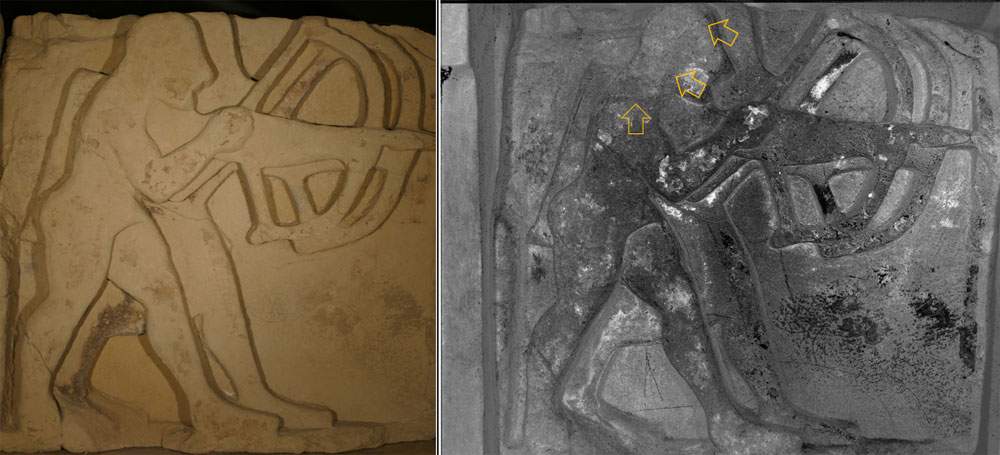Multispectral analyses have led to a breakthrough in the study of the sanctuary of Hera on the Sele River, located nine kilometers north of ancient Paestum: this is where the metope depicting the god Apollo and thirty-five other specimens of extraordinary importance to the history of Greek art came from. The analyses, funded by the Fondazione Mezzogiorno Tirrenico at the proposal of Confindustria di Salerno, showed that the metope with Apollo was completed with use of colors.
Archaeometric analyses, still in progress, would show that the metopes now on display in the Paestum Archaeological Museum were painted and later mounted on a temple. This is one of several junctures surrounding the history of the important sanctuary of Hera at the mouth of the Sele River, founded, according to legend, by Jason.
“Today, however, we can be certain that the metopes were part of a large temple at the beginning of the Doric stone architecture of the years 570/60 BCE. This is another proof of the fundamental contribution that the colonial areas of southern Italy and Sicily made to the formation of Doric architecture in the Greek world,” said Paestum Archaeological Park director Gabriel Zuchtriegel.
“I am sure that the findings will arouse a lot of interest and cause discussion beyond the specialist field, also because we are talking about one of the oldest Doric stone temples, dating back to 570 B.C., dedicated to Hera Argiva, goddess of fruitful love. The prestige that the Archaeological Park has earned in recent years will only increase in the future as well, giving further impetus from the initiatives in the pipeline,” added Giuseppe Rosa, president of the Tyrrhenian Mezzogiorno Foundation.
In the image, Metopa with Apollo and Artemis showing traces of hair made with color.
 |
| Colors emerge in Paestum from the temple of Hera on the Sele River |
Warning: the translation into English of the original Italian article was created using automatic tools. We undertake to review all articles, but we do not guarantee the total absence of inaccuracies in the translation due to the program. You can find the original by clicking on the ITA button. If you find any mistake,please contact us.